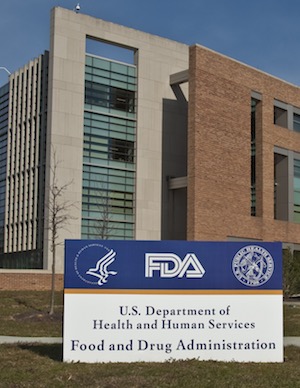 On Thursday, October 6th, the U.S. Food and Drug Administration (FDA) published a 79-page notice in the Federal Register regarding new rules surrounding Abbreviated New Drug Applications (ANDAs) and 505(b)(2) new drug applications. Many provisions of the new rules affect information that must be submitted by applicants regarding patents which could affect the outcome of applications for new generic versions of drug treatments.
On Thursday, October 6th, the U.S. Food and Drug Administration (FDA) published a 79-page notice in the Federal Register regarding new rules surrounding Abbreviated New Drug Applications (ANDAs) and 505(b)(2) new drug applications. Many provisions of the new rules affect information that must be submitted by applicants regarding patents which could affect the outcome of applications for new generic versions of drug treatments.
Both ANDAs and 505(b)(2) applications are mechanisms established by the Hatch-Waxman Act of 1984 by which drug developers can more quickly enter the pharmaceutical market without all of the costs associated with filing an NDA. 505(b)(2) applications, which are for new drugs, can include safety and efficacy information regarding administration of the drug from studies other than those conducted by the applicant. This creates a more cost-effective path for applying for FDA drug approval without taking on costly clinical trials. ANDAs, which are filed for generic versions of pharmaceuticals already approved by the FDA, do not need to include preclinical and clinical trial data if the applicant can demonstrate that the generic is bioequivalent, which means it produces the same effects in the human body, to the FDA-approved drug.
One of the objectives of the FDA’s new rules regarding both ANDAs and 505(b)(2) is clarification of patent use codes which are found in the Orange Book, which includes a listing of identified drug products approved by the FDA. The Orange Book also lists the patents which have been identified by drug developers as protecting the pharmaceuticals approved by the FDA. Parties filing a New Drug Application (NDA) must include use codes in their application which describe only the specific approved method of use covered by the patent. The FDA includes this provision to prevent overbroad or ambiguous use codes from hampering the efforts of ANDA or 505(b)(2) petitioners.
The FDA’s revised rule also attempts to facilitate prompt listing times for untimely filed patent information, or patent information filed by an NDA applicant with the FDA more than 30 days after patent issuance by the U.S. Patent and Trademark Office. Now, the category of untimely filed patent information will include amendments made by an NDA petitioner to the description of the approved method of use if changes aren’t submitted within 30 days of either an approval of a corresponding change in product labeling or a decision by the USPTO or in federal court to alter the construction of the patent’s claims. The FDA says that this should reduce approval delays caused by overbroad or ambiguous patent use codes.
Those filing ANDA or 505(b)(2) applications may find that they have an improved mechanism for challenging the accuracy or relevance of patent information submitted by an NDA applicant to the FDA. NDA holders now have a 30-day window in which it is required to respond to any patent listing disputes. NDA holders will also be required to correct or change patent information if a patent or patent claim no longer meets the statutory requirements for listing, if the NDA holder is required by court order to amend patent information or withdraw a patent from the list or the term of a listed patent is extended.
Paragraph IV certifications, in which an ANDA or 505(b)(2) applicant makes a certification that its generic drug treatment will not infringe an NDA holder’s patents or that those patents are unenforceable, also get revamped slightly under the FDA’s new rules. Now, ANDA applicants cannot send a valid paragraph IV certification to an NDA holder before the NDA holder’s patent is listed in the Orange Book; specifically, the rule states that the first possible day of paragraph IV certification submission is “the first working day after the day the patent is published in the Orange Book.” Paragraph IV certifications sent before the identified patent is listed in the Orange Book will be considered invalid in an attempt to equity among ANDA applicants seeking eligibility for the 180-day period of market exclusivity the applicant earns when an ANDA is accepted. Under the new rule, accepted methods of sending notice of paragraph IV certifications are being extended beyond registered or certified mail to include “designated delivery services.” In FDA’s responses to public comment, it was indicated that the FDA did not seek to identify specific services in its guidance at this time.
The FDA’s new rule also addresses the process by which an ANDA or 505(b)(2) applicant can amend a paragraph IV certification after a judicial finding of patent infringement. Applicants must file an appropriate patent certification or statement to accompany an amendment concerning new drug strength, changes in the crystalline structure of the active ingredient or a new condition of use. However, the new rules also prevent applicants from submitting amendments that would seek approval of a drug which is a different drug than the one identified in the original application.

![[IPWatchdog Logo]](https://ipwatchdog.com/wp-content/themes/IPWatchdog%20-%202023/assets/images/temp/logo-small@2x.png)


![[Advertisement]](https://ipwatchdog.com/wp-content/uploads/2024/04/Patent-Litigation-Masters-2024-sidebar-700x500-1.jpg)

![[Advertisement]](https://ipwatchdog.com/wp-content/uploads/2021/12/WEBINAR-336-x-280-px.png)
![[Advertisement]](https://ipwatchdog.com/wp-content/uploads/2021/12/2021-Patent-Practice-on-Demand-recorded-Feb-2021-336-x-280.jpg)
![[Advertisement]](https://ipwatchdog.com/wp-content/uploads/2021/12/Ad-4-The-Invent-Patent-System™.png)






Join the Discussion
No comments yet.